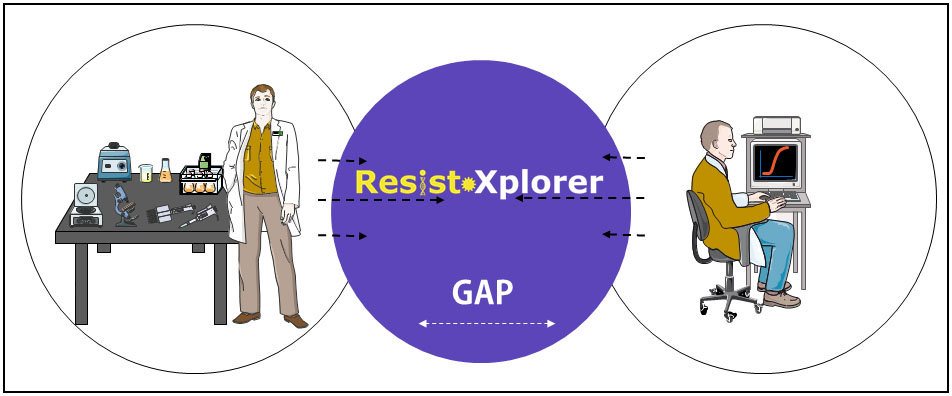Antimicrobial resistance (AMR) is a major global public health threat, which arises when microorganisms harboring antimicrobial resistance genes (ARGs) grow at the expense of others and spread the resistance genes to other microorganisms. Thus, examining and understanding ARGs in microbial communities can provide insights into AMR emergence and dissemination.
The use of high-throughput DNA sequencing (HTS) technologies has made rapid identification and characterization of ARGs across microbial genomes very accessible and feasible. They have been shown to provide unparalleled knowledge into the large reservoir of ARGs and contributed to elucidate the ARG composition and the spread of AMR between human, animal and environmental microbial communities.
«Big data» challenges in data analysis
Currently, resistome profiles describing ARGs in complex and diverse microbial metagenomes are primarily generated using whole metagenome shotgun sequencing in which the total DNA extracted from a microbial community is sequenced. The resulting sequencing datasets are large and complex, causing considerable «big data» challenges in data analysis.
Despite the significant computational advancements, there are no easy-to-use tools for comprehensive visual, statistical and functional analysis of AMR metagenomic (resistome) data. Thus, understanding and interpreting large complex datasets remains a crucial bottleneck requiring robust computational resources and technical expertise, which creates a significant hurdle for advancements in the field.
A user-friendly, visual analytics tool
To address these gaps as well as to meet recent advances in resistome data analysis, researchers from the Institute of Oral Biology (IOB) at the University of Oslo have developed ResistoXplorer, a user-friendly, web-based, visual analytics tool, to assist clinicians, bench researchers and interdisciplinary groups working in the AMR field to perform exploratory analysis on data generated from AMR metagenomics studies.
As a result, researchers and clinical scientists with no prior knowledge and bioinformatics training in the field can now easily explore their datasets using a variety of approaches, in real-time and through interactive visualization, which facilitate data understanding and hypothesis generation. This tool's functionalities and utilities have just been published as a research article in the Nucleic Acid Research (NAR) Genomics and Bioinformatics journal.
The tool is freely available to everyone at http://www.resistoxplorer.no. Researchers at IOB also believe that ResistoXplorer will have the potential to find large applicability as a valuable resource for researchers in the field of AMR. This work was an important collaborative effort with the Forsyth Institute. The work has been financed by the Research Council of Norway and DIKU under the INTPART program, by the Research Council of Norway under the INDNOR program, and by the Olav Thon Foundation.
Reference
Dhariwal A, Junges R, Chen T, Petersen FC. ResistoXplorer: a web-based tool for visual, statistical and exploratory data analysis of resistome data. NAR Genom Bioinform. 2021 Mar 24;3(1):lqab018. doi: 10.1093/nargab/lqab018. PMID: 33796850; PMCID: PMC7991225.
